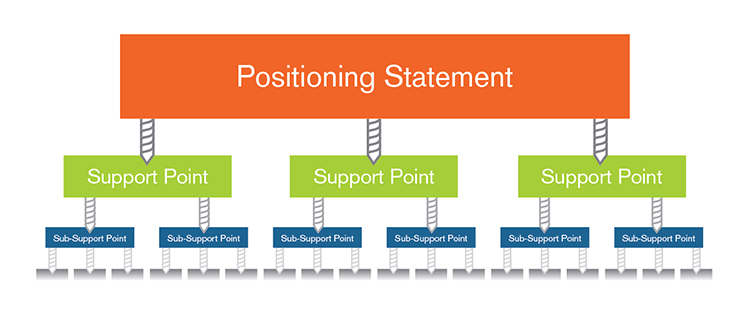B2B Positioning Strategy Explained
A B2B positioning strategy includes your message strategy and a five- to eight-page rationale document that summarizes the 3C’s research used to converge on the ideal message strategy.
To effectively position, you need to thoroughly research the 3Cs – your customers, competitors and channel (how you sell either direct or through partners). This understanding of the 3C’s leads you to a message strategy that makes it easier for buyers to buy.
Once you have done your 3Cs research, you need to share it. Your rationale document provides the evidence that supports your proposed message strategy and the justification for it. The rationale document helps educate and inform those who are providing input and feedback during the positioning process. It is a summary of the important research they need to know to objectively judge the potential effectiveness of a proposed message strategy or to suggest something better.
A rational document explains the thinking behind your position statement
Your rationale document also explains the justification for your proposed message strategy which includes a positioning statement and three to four support points. A positioning statement is a short, declarative sentence that expresses just one benefit, and addresses your target market’s most pressing problem. It becomes the central idea or theme for all your marketing activities.
 The reaction you want to your positioning statement is “That’s interesting: Tell me more! How do you do it?” Support points – three to four of them – explain how you deliver on the promise you make in your positioning statement.
The reaction you want to your positioning statement is “That’s interesting: Tell me more! How do you do it?” Support points – three to four of them – explain how you deliver on the promise you make in your positioning statement.
Support points prove or substantiate the claim made in the positioning statement and provide the reason to believe it. Most importantly, support points must support, not compete with the positioning statement.
If your support points are too benefit-oriented, they may overpower your positioning statement, and your target audience may not know which position you are trying to claim among several you are making. As a result, you end up with no position.
Supporting your support points
Each of your three or four support points can have as many bullet points below them as necessary to accommodate any marketing situation. The goal is to cover every imaginable marketing communications requirement so that a writer or marketer doesn’t encounter a situation in which they have to wing it and make something up.
Your support points can be extremely detailed and ultimately drill down to a demonstration that proves your claim. This is accomplished in outline format with sub-support points, sub-sub support points, sub-sub-sub support points, etc.
Once your message strategy has been approved, the rationale document is a reference guide for writers and communicators who may not be product or domain experts. Your rational document saves time, eliminating the need to provide writers with the background information every time you have a new marketing project.
Your B2B positioning strategy gives buyers a reason to buy
An effective B2B positioning strategy helps your target buyers associate a benefit with your solution, product or company that makes them want to buy. With some effort, time and money, you can claim a position by consistently executing an idea that has meaning to the target audience in all your marketing communications.
A positioning strategy makes it easier to deliver the same message across all marketing media including web sites, brochures, advertisements and presentations to investors, industry analysts and prospects. Repetition is one of the most important factors in claiming a position and giving it staying power. Remember, you’ll get tired of your message strategy long before your target audience is tired of it – and sometimes even before all your audiences have heard your positioning for the first time. Give it a chance to work.
Here is a link to more information about the message strategy.
